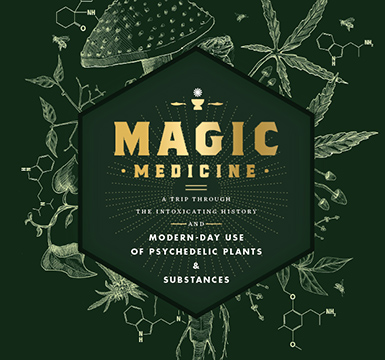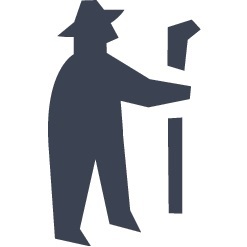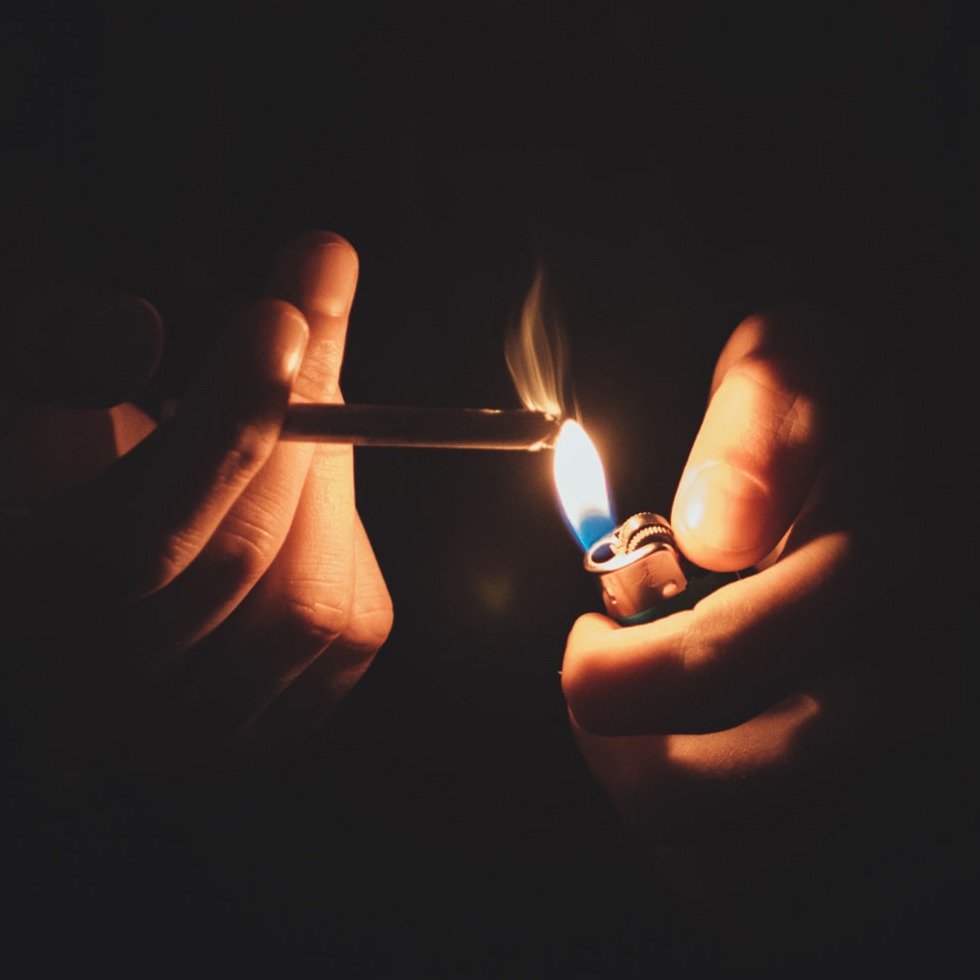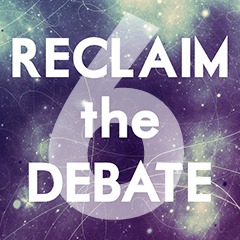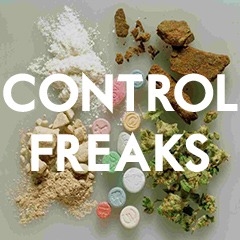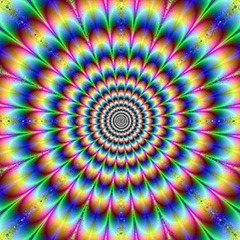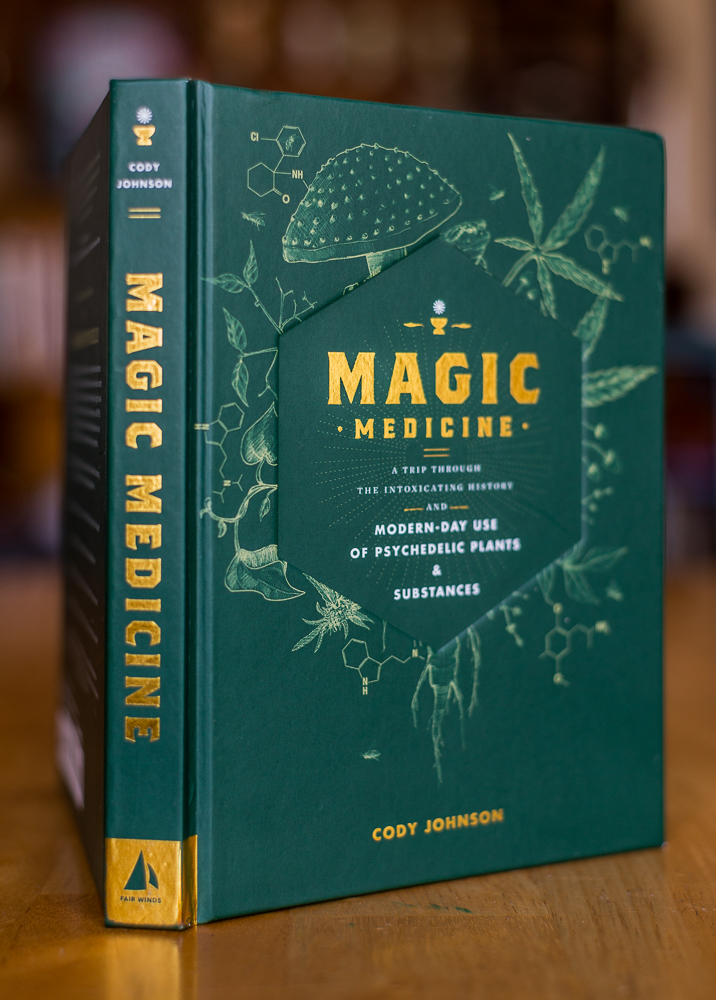Today’s guest post is by Lincoln Stoller, PhD, CHt, a hypnotherapist in British Columbia who writes at mindstrengthbalance.com.
![]()
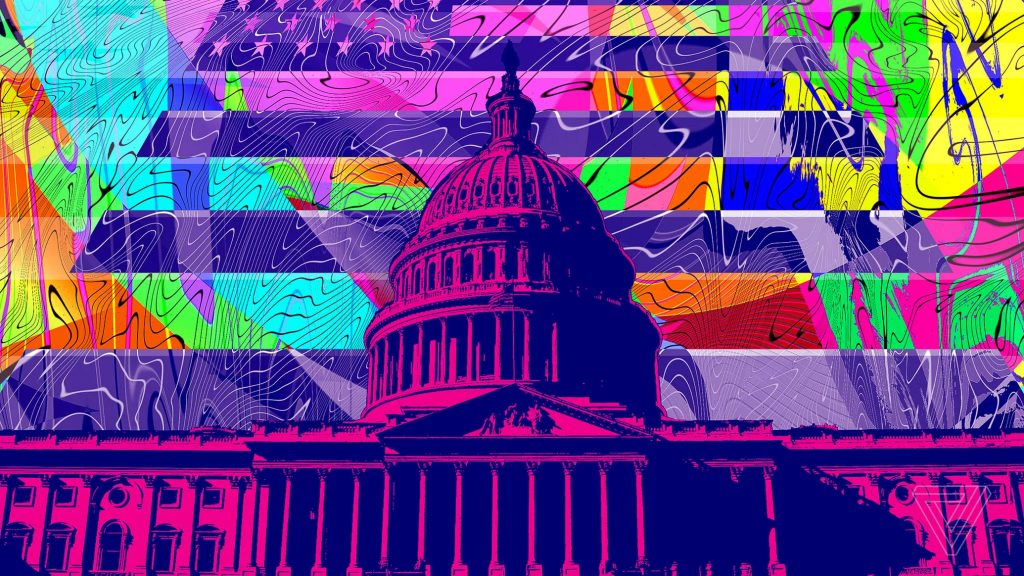
Illustration by Alex Castro for The Verge
Psychedelics are illegal out of medical ignorance and for political advantage, and remain illegal for those reasons.
Law and policy are not driven by science, they’re driven by expediency and advantage. In the US in the 1980s, psychotherapy was replaced by pharmaceuticals as subsidies for therapy were cut as part of a shift toward managed care. This was in spite of the success of therapeutic models and the lack of managed care alternatives.
Today’s interest in the potential of psychedelics are not solely due to breakthroughs in their use. That potential has been noted since the “Good Friday Experiment” of 1962, and there have been sixty years of positive reports since then. What’s different now is not the science, but institutional attitudes and social directions.
It appears that the promise of psychedelic-assisted psychotherapy is a leading force for this kind of change, but I suspect that this is more of a common cause and a rallying cry.
Psychotherapy, a new “white knight” on the scene, seems to be leading psychedelics in a drive toward legality but there is more going on. As prospective users, or as people who will be impacted by their use, it behooves us to look a little deeper into the alliances that are being formed. Let’s go back and look at some of the history.

Communication network concept. AI(Artificial Intelligence).
The Law
Scheduled drugs are a broad set of categories used to designate drugs purported to have no socially redeeming value. Schedule I includes heroin, LSD, MDMA, and peyote, which reflects little in the way these chemical are used or their risks. Schedule II drugs include cocaine, methamphetamine, and fentanyl, drugs that are harming more people but less punishable than the schedule I drugs. These categories were ill-advised and hypocritical from the start.
Amphetamines were used by all armed forces since WWII. The Axis forces, from those in the field to the High Command, subsisted on continuous drug abuse. US forces—all Allied forces I presume—also used amphetamines widely. In 2003, Dr. Pete Demitry, an Air Force physician and a pilot, stated that the use of speed was “is a life-and-death issue for our military.”
[pullquotecenter]What’s different now is not the science, but institutional attitudes and social directions.[/pullquotecenter]
If you’re sending people out to kill each other, then you might as well extract every last bit of energy from them. A similar argument would hold that providing relaxation justifies servicemen’s use of marijuana, as roughly half of servicemen in Vietnam smoked it. This argument might not apply to the military’s use of opiates, as ten to fifteen percent of US servicemen were addicted to heroin during the Vietnam war. Or maybe it does, if it kept them fighting. But stateside, marijuana was illegal.
Marijuana’s illegality was not based on health factors but appears to involve racism and economics. An unpopular increase in Mexican immigration brought the herb into the country in the early part of the century, and the hemp industry threatened the news and paper industry.
Waves of laws were passed controlling pot from the early 20s until the blanket illegalization in the 1970s. These laws were peddled under false pretenses and with stunning biological ignorance. They followed the general mandate of outlawing alternative recreational drugs that threatened the alcohol and tobacco industries. These laws were also aimed at weakening the power of those who used them.
In 1970, President Richard Nixon spearheaded the Comprehensive Drug Abuse Prevention and Control Act. In 1971, Nixon initiated the “War on Drugs,” whose main goal was not public safety but the consolidation of power. John Ehrlichman, Nixon’s Assistant for Domestic Affairs, made this clear in 1994, long after the fact, when he said,
The Nixon campaign in 1968, and the Nixon White House after that, had two enemies: the antiwar left and black people. You understand what I’m saying? We knew we couldn’t make it illegal to be either against the war or black, but by getting the public to associate the hippies with marijuana and blacks with heroin, and then criminalizing both heavily, we could disrupt those communities. We could arrest their leaders, raid their homes, break up their meetings, and vilify them night after night on the evening news. Did we know we were lying about the drugs? Of course we did.
Nixon referred to Timothy Leary as “the most dangerous man in the world.” One might say this was a case of the pot calling the kettle black were not the Nixon administration more dangerous by far. Closely correlated with Nixon’s drug war, the incarceration rate of black Americans went up tenfold. In 2008, the Washington Post reported that one in five black Americans would spend time behind bars due to drug laws.
Subsequent administrations continued Nixon’s well-documented racism and exceptionalism, funneling money to fascist governments in Latin and South America through selective management of the illegal drug trade. This continued in Panama until it was exposed when Nicaraguan Contras downed a CIA airplane. Then, finally, the CIA had to wash its hands of Panama.
The hypocritical War on Drugs continued through all administrations, and continues still. Mexico’s former defense minister was just arrested in Los Angeles, finally identified as the long-elusive Mexican drug kingpin “the Godfather.” He was Mexico’s top military official from 2012 to 2018.
The war on drugs has been a war to make money, further political goals, personal interests, and to control people’s minds. It was clearly okay to mess with people’s minds when it benefited our imperial objectives or furthered specific interests at home. And while I think Donald Trump is, himself, about as helpful as global warming, what he refers to as “the deep state” has clearly been up to its armpits in drug money.
[pullquoteleft]How would you feel if your personal growth required your doctor’s approval?[/pullquoteleft]The War on Drugs has been divisive since its inception. Its purpose and method has been to divide and conquer, but tides have changed. Now racism is less fashionable—though still popular—and new money is to be made. In 2008 and again in 2018, polling revealed seventy-five percent of Americans believed the War on Drugs was failing.
The pretense of the War on Drugs is falling apart. People with drug addiction were first framed as devils, then criminals, and then as mentally ill. Toxic street drugs are now synthetic. Pot is not only tame by comparison, but a profitable legal business, a source of huge tax revenues, and even therapeutic—it’s questionable how much that really matters, though it’s good for public relations.
Now comes the next beachhead: psychedelics. The forces carrying the standard are psychotherapists with entrepreneurs close behind. Given how much graft, evil, and bullshit has been perpetrated so far, just how warmly should we welcome these new initiatives?
Are we trading illegality for medical restrictions in a situation where psychedelics should be legal for all? The inclination of the medical industry is not clear but, in the past, these organizations have struggled for the right to control medication.
I’ve spoken to leaders who recognize both the risk and the potential for moving restrictive powers from one authority to another. The general view is that this is an opening. The hope is that as the population becomes more experienced, they will become more accepting.
The general population has been clueless about the undercurrents of drug policy. How well-informed are these psychologists and entrepreneurs regarding the truth of the fray they’re entering? We may be enthusiastic to join enlightened psychologists in removing old restrictions, but what new rules are we working toward?

Three sadhus, Indian spiritual ascetics who use cannabis to connect to the divine
Therapy
If you want to be treated with psychedelics, then you’re going to need to have a diagnosis.
The APA serves three audiences. They serve the needs of their members which includes psychiatrists, psychologists, social workers, and their own management. They serve the public and public institutions which include your insurance company, courts, and legislatures. And they serve patients and clients of mental health services. Because this mandate and these services are so broad, you will not be surprised that there’s always a lot of discussion about every element of the DSM, from its general structure to its individual diagnoses.
Most users of the DSM think it was written just for them. Health service providers largely believe that the ailments described are real things that truly exist in people, for which they need therapy and from which they seek a cure. Clients involved in the legal system believe mental competence is well defined through reference to the DSM though, if pressed, attorneys will quickly admit that it’s what succeeds in court that counts, not what works at home. Hospitals and insurance companies are even less concerned with arguing the fine points. For them, the DSM is a structure they can build upon, and the truth is measured by their bottom line.
It is in this context that you must understand that the DSM is not written to meet any of these needs. It is written to provide a language for description and discussion of major social trends and dominant personal conditions. Its descriptions are not diagnoses in the usual medical terms, but rather behaviors and presentations that more or less define collections of people. There is no pretense of identifying disease or cure. The DSM really is a dictionary, a description of ideas, not an explanation or a proof of anything.
Psychedelics
When it’s said that psychedelics are being used for psychotherapy, what is meant is that psychedelics are being used to move people from one category of the DSM to another. You may think that what is meant is that your trauma, dependence, or depression might be cured, but cure is not part of the DSM. What is meant is that your presentation will be shifted such that you no longer fit the category. That is to say, it’s not what you think that counts, it’s what the doctors think, and it’s always this way when you surrender yourself to experts.
In these turbulent times, great cures are heralded as coming out of the jungle and from new studies. New cures are trumpeted for illness and addiction, and new means for revelation and personal growth. But as other ailments have shown, and as your insurance company will attest, it’s the people who set policy who will determine how these resources are made available. If we leave the power for change in the hands of the psychological and medical establishment, then it will be case in the terms currently established by the DSM. Mind expansion, revelation, insight, universal consciousness, and divine connection are not categories in the DSM.
If you want to benefit from mental health services then you’re going to need to present yourself as someone with a recognized dysfunction. If you want to be treated with psychedelics, then you’re going to need to have a diagnosis. Right now, as trials and experiments are being done, the criteria are lax. You can be included in a trial based on whatever the experimenters decide. But once treatments are established, you’ll need to fit within the paradigm.
It’s not clear how narrow or carefully controlled these parameters will be. Currently, Canada is moving to legalize psilocybin for terminal patients. That might mean you need to qualify for hospice, and this is probably something you’d rather not be qualified for.
[pullquotecenter]We may be enthusiastic to join enlightened psychologists in removing old restrictions, but what new rules are we working toward?[/pullquotecenter]
MDMA is being tested in a therapeutic context for various forms of distress and dysfunction, but that’s not what most Ecstasy users are using it for. Should you need to be sick or dying before you’re allowed to use psychedelics?
The history of drug legalization spans everything from the eminently reasonable to the totally corrupt. Poisons should be regulated, and all medicines are poisons. Yet most poisons are not regulated.
You can make a fatal brew from the Foxglove you’ll find in almost every garden. Sales of Drain-o are not regulated and it will kill you quick. Sales of alcohol are regulated, but you’d be hard pressed to take a fatal dose. You can buy as much ethyl alcohol as you want if you pay the government tax, but you can’t buy any if you don’t. Ether is now considered toxic and you need a chemical permit to buy it, but it used to be freely available and people made it into cocktails. Who gets to say what poisons are legal?
Psychedelics are illegal out of medical ignorance and for political advantage, and remain illegal for those reasons. Accepting their use for psychotherapy proposes a laudable medical use, but does not address the enduring issues of ignorance and manipulation.
We would like to think that this is a step in the right direction, but where do these steps lead? Are we surrendering control to a more trusted authority?
We’ve been trained to trust our doctors. I’m a doctor—a doctor of physics—and a therapist, and I know better than to trust doctors and therapists. I don’t trust them in physics and I don’t trust them in medicine. Doctors and therapists are trained as practitioners within their scope of practice. Psychedelics are outside their scope of practice. There is little chance that revelation will fit within this scope. How would you feel if your personal growth required your doctor’s approval?
If these new initiatives lead to more exploitation and control for profit and politics, then we should not be so enthusiastic. Psychedelics hold more promise than returning things to normal, and I object to the limited view that psychedelics should only serve psychotherapy.
If what we want is intelligence, insight, and autonomy, then we should remain attentive to the full promise of personal growth for the reform of individuals, society, and ecology. Psychedelics are not toxic medicinals, they have the potential to be consciousness expanding entheogens. This is a far larger goal that assisting psychotherapy. We must keep these larger personal and social goals in our sights.
![]()
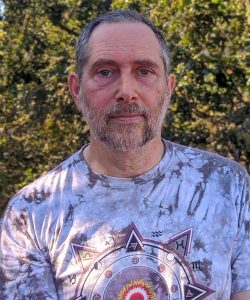 Lincoln Stoller has a degree in theoretical quantum physics, spent two decades as a software developer, has traveled widely, and has been a psychonaut following many disciplines and chemistries. He’s now a hypnotherapist and neurofeedback therapist living in British Columbia, Canada.
Lincoln Stoller has a degree in theoretical quantum physics, spent two decades as a software developer, has traveled widely, and has been a psychonaut following many disciplines and chemistries. He’s now a hypnotherapist and neurofeedback therapist living in British Columbia, Canada.
Liked this post? Subscribe to my RSS feed to get much more!

